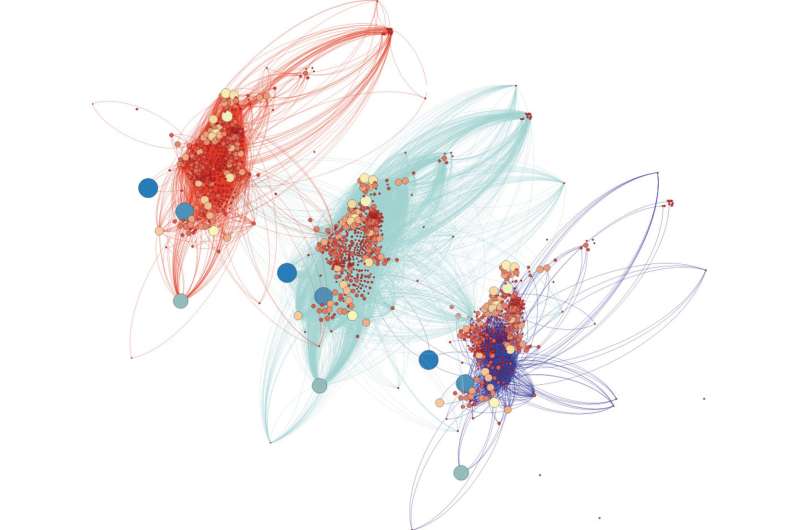October 20, 2016 report
Major commuting differences found between rich and poor in Colombia

(Phys.org)—A small team of researchers from Universidad Nacional de Colombia and Universidad de Zaragoza in Spain has found that there are a number of differences between the commuting experiences for people living at different wealth levels in two major cities in Colombia. The team has written a paper describing their study and results and have uploaded it to the open access site Royal Society Open Science.
Most people are aware of some of the differences in the ways that people move between work and home on a regular basis—rich people drive, take taxis or ride in town cars or limos, for example; poor people tend to ride bikes, take the bus or metro, and in some cases, walk from one place to another. In this new effort, the researchers sought to learn more about this daily bustle by studying the commuting activity of six major economic groups traveling back in forth in the two Colombian cities of Medellin and Manizales. This process was made somewhat easier by the fact that the Colombian government has mandated that everyone, regardless of class, be assigned to one of six economic categories for the purpose of distributing resources and collecting public service fees.
The study by the team consisted of making use of data from the government and from prior human mobility studies that have been conducted via surveys to learn more about where people are in a given area at given times. They used the data from both sources to create maps that showed where people of difference classes were at different times of the day, which revealed commuting patterns. The researchers found that middle class neighborhoods were the most densely populated, which meant those people came into more contact with others during their commute than other groups—they also used a wider variety of transportation options in their commute.
The biggest differences the researchers saw were between those at the low end of the economic scale and those at the top—both groups tended to travel farther than the middle class, but in different ways—the poor traveled all over the city while the rich were concentrated into a few zones, and the poor used much slower forms of transportation. This variance resulted in large differences in commute times, which meant that the poor left home earlier and got home later than the rich—and that, the researchers contend, means that the poor have less time to improve their economic status. They also tend to get less sleep, a further hindrance to improving their conditions.
More information: Laura Lotero et al. Rich do not rise early: spatio-temporal patterns in the mobility networks of different socio-economic classes, Royal Society Open Science (2016). DOI: 10.1098/rsos.150654
Abstract
We analyse the urban mobility in the cities of Medellín and Manizales (Colombia). Each city is represented by six mobility networks, each one encoding the origin-destination trips performed by a subset of the population corresponding to a particular socio-economic status. The nodes of each network are the different urban locations whereas links account for the existence of a trip between two different areas of the city. We study the main structural properties of these mobility networks by focusing on their spatio-temporal patterns. Our goal is to relate these patterns with the partition into six socio-economic compartments of these two societies. Our results show that spatial and temporal patterns vary across these socio-economic groups. In particular, the two datasets show that as wealth increases the early-morning activity is delayed, the midday peak becomes smoother and the spatial distribution of trips becomes more localized.
Journal information: Royal Society Open Science
© 2016 Phys.org



















